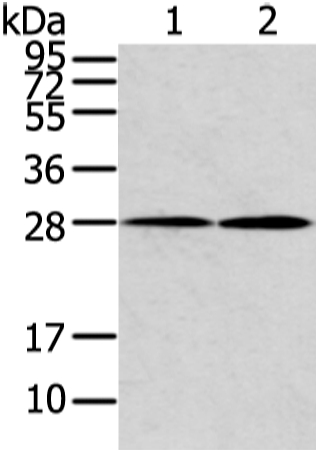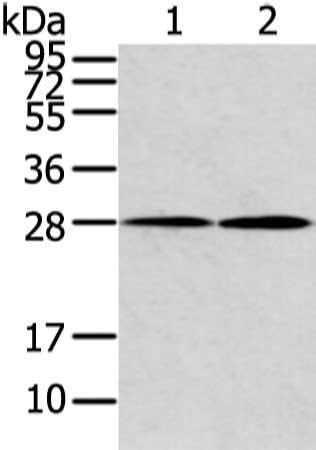KCNMB1 antibody [N1C3]
GTX105666
ApplicationsWestern Blot
Product group Antibodies
TargetKCNMB1
Overview
- SupplierGeneTex
- Product NameKCNMB1 antibody [N1C3]
- Delivery Days Customer9
- Application Supplier NoteWB: 1:1000-1:10000. *Optimal dilutions/concentrations should be determined by the researcher.Not tested in other applications.
- ApplicationsWestern Blot
- CertificationResearch Use Only
- ClonalityPolyclonal
- Concentration1 mg/ml
- ConjugateUnconjugated
- Gene ID3779
- Target nameKCNMB1
- Target descriptionpotassium calcium-activated channel subfamily M regulatory beta subunit 1
- Target synonymsBKbeta1, K(VCA)beta, SLO-BETA, hbeta1, hslo-beta, k(VCA)beta-1, slo-beta-1, calcium-activated potassium channel subunit beta-1, BK channel beta subunit 1, BK channel subunit beta-1, MaxiK channel beta-subunit 1, big potassium channel beta subunit 1, calcium-activated potassium channel, subfamily M subunit beta-1, charybdotoxin receptor subunit beta-1, large conductance Ca2+-activated K+ channel beta 1 subunit, maxi K channel subunit beta-1, potassium channel subfamily M regulatory beta subunit 1, potassium large conductance calcium-activated channel, subfamily M, beta member 1
- HostRabbit
- IsotypeIgG
- Protein IDQ16558
- Protein NameCalcium-activated potassium channel subunit beta-1
- Scientific DescriptionMaxiK channels are large conductance, voltage and calcium-sensitive potassium channels which are fundamental to the control of smooth muscle tone and neuronal excitability. MaxiK channels can be formed by 2 subunits: the pore-forming alpha subunit and the product of this gene, the modulatory beta subunit. Intracellular calcium regulates the physical association between the alpha and beta subunits. [provided by RefSeq]
- Storage Instruction-20°C or -80°C,2°C to 8°C
- UNSPSC12352203
References
- Barnes EA, Lee L, Barnes SL, et al. β1-Subunit of the calcium-sensitive potassium channel modulates the pulmonary vascular smooth muscle cell response to hypoxia. Am J Physiol Lung Cell Mol Physiol. 2018,315(2):L265-L275. doi: 10.1152/ajplung.00060.2018Read this paper
- Nieves-Cintrón M, Syed AU, Buonarati OR, et al. Impaired BK(Ca) channel function in native vascular smooth muscle from humans with type 2 diabetes. Sci Rep. 2017,7(1):14058. doi: 10.1038/s41598-017-14565-9Read this paper





